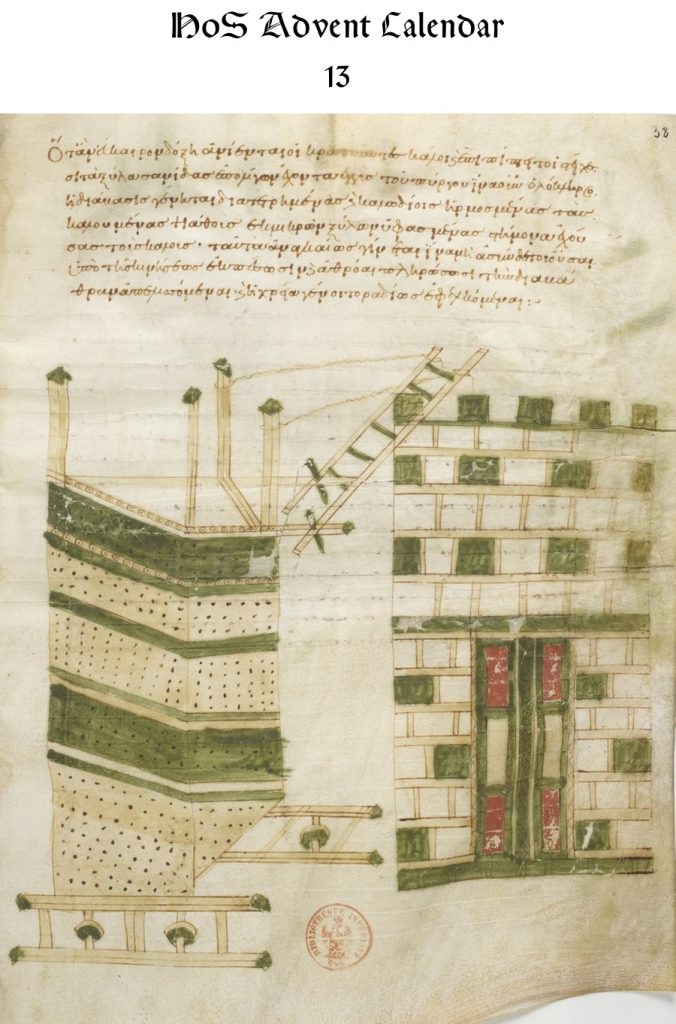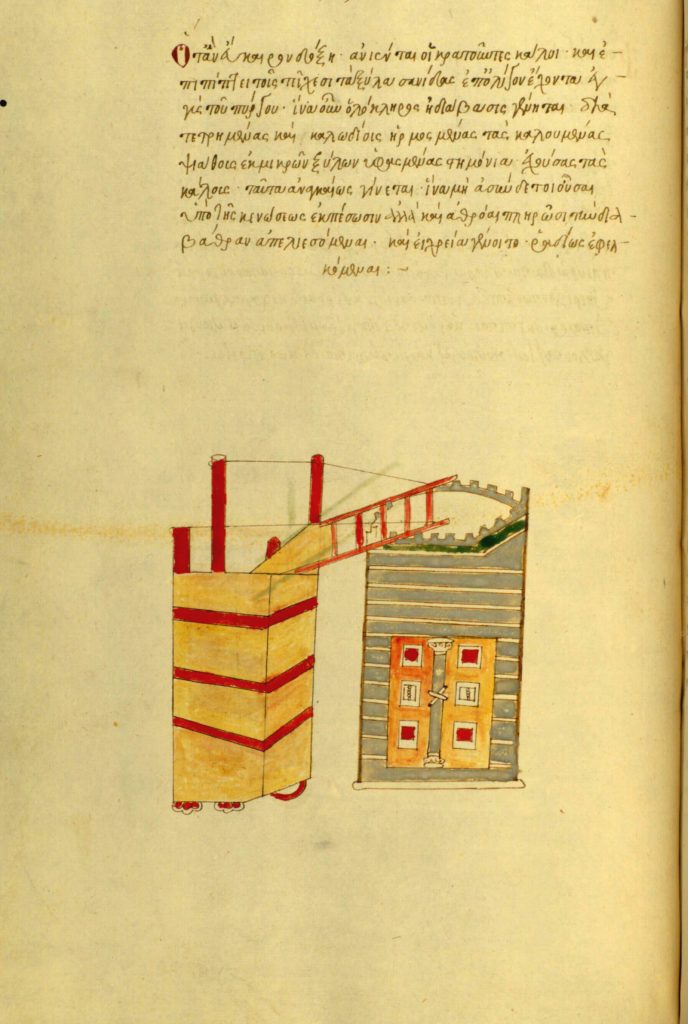
Apollodorus of Damascus is generally thought to have written the “Πολιορκητικά,” a treatise on siege engines, addressed to an unnamed emperor (probably Trajan). The text first treats siege engines used to besiege a hilltop fort, machines to protect troops from objects rolled down the hill as well as devices for protecting men attacking the base of the walls. It describes devices for drilling through walls and setting fire to walls as well as sheds for battering rams. The text also describes towers used to scale walls and invade a fort as well as towers with pivoting arms to sweep defenders off the walls.

Apollodorus worked on various engineering and building projects for the emperor Trajan in the early second century CE. He was responsible for such projects as Trajan’s Bridge over the Danube during the campaign in Dacia, Trajan’s Column and Trajan’s Forum, various triumphal arches, baths, and other smaller building projects.[1] During Emperor Hadrian’s reign, he was banished and then executed around 130 CE.
-
He is sometimes given credit for redesigning the imperial residence as well as the Pantheon, but clear evidence is lacking. For a nice post on Apollodorus’s works, see Apollodorus of Damascus: Architect of Empire. ↩